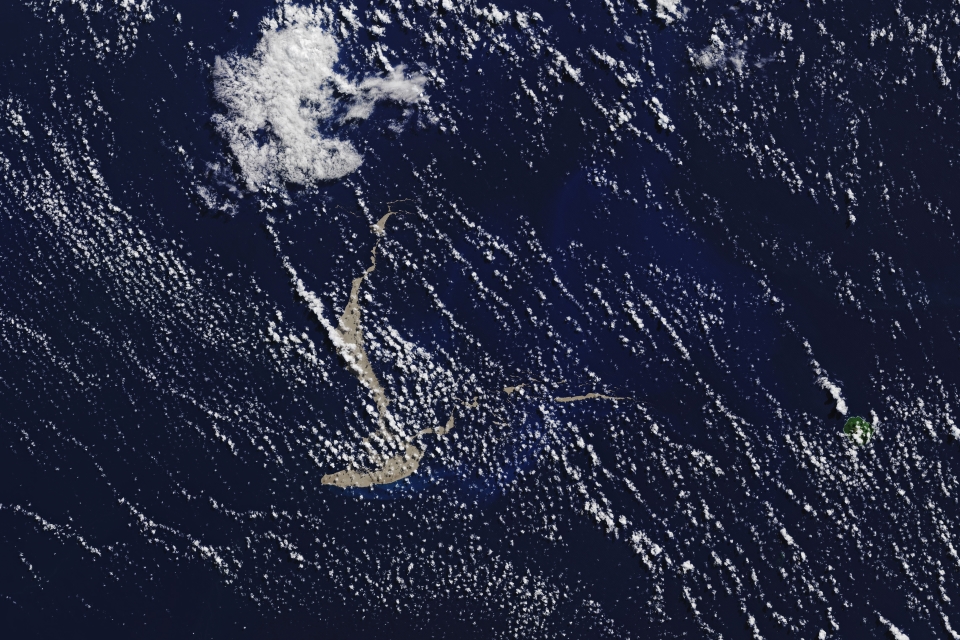Scientists believe that the massive volcanic rock spotted floating in the South Pacific Ocean could help restore the Great Barrier Reef. The pumice raft, which reportedly emerged from an underwater volcanic eruption near the Tonga Islands weeks ago, is now moving towards Australia.
While the emergence of pumice rafts are common in the said area of the Pacific Ocean, this one is particularly huge. It measures around 150 kilometers squared and can accommodate over 20,000 football fields.
NASA’s Terra satellite first detected the mass of floating rock on August 9th. By August 13th, image taken by the Operational Land Imager onboard the Landsat 8 showed that the massive pumice raft had drifted southwest.
Erik Klemetti, a volcanologist from Denison University, wrote:
“Pumice rafts can drift for weeks to years, slowly dispersing into the ocean currents. These chunks of pumice end up making excellent, drifting homes for sea organisms, helping them spread.” –
Pumice Raft to Rescue the Great Barrier Reef
The gigantic pumice raft is now drifting east and is expected to reach Australian waters in the next seven or eight months. It will float past New Caledonia, Vanuatu, and other small islands on its way to Australia.
While some products of volcanic eruptions pose hazards to both sailors and marine animals, this floating massive volcanic rock could potentially save the Great Barrier Reef.
Over the last decade, the Great Barrier Reef has suffered tremendously from climate change. The extreme weather condition caused coral death and bleaching.
Numerous efforts have been launched to help the reef recover. But to this day, restoring the reef’s former glory remains a significant challenge to the Australian government and other environmental organizations.
However, the news of the pumice raft moving towards the Great Barrier Reef renewed the hope of scientists. Scott Bryan, a geologist from the Queensland University of Technology, said:
“This is a potential mechanism for restocking the Great Barrier Reef. Based on past pumice raft events we have studied over the last 20 years, it’s going to bring new healthy corals and other reef dwellers to the Great Barrier Reef.”
QUT researchers noted that aquatic organisms would soon attach themselves to the massive volcanic rock.
“It will be able to pick up corals and other reef-building organisms, and then bring them into the Great Barrier Reef,” Bryan added. “Each piece of pumice is a rafting vehicle. It’s a home and a vehicle for marine organisms to attach and hitch a ride across the deep ocean to get to Australia.”



















Comments (0)
Most Recent